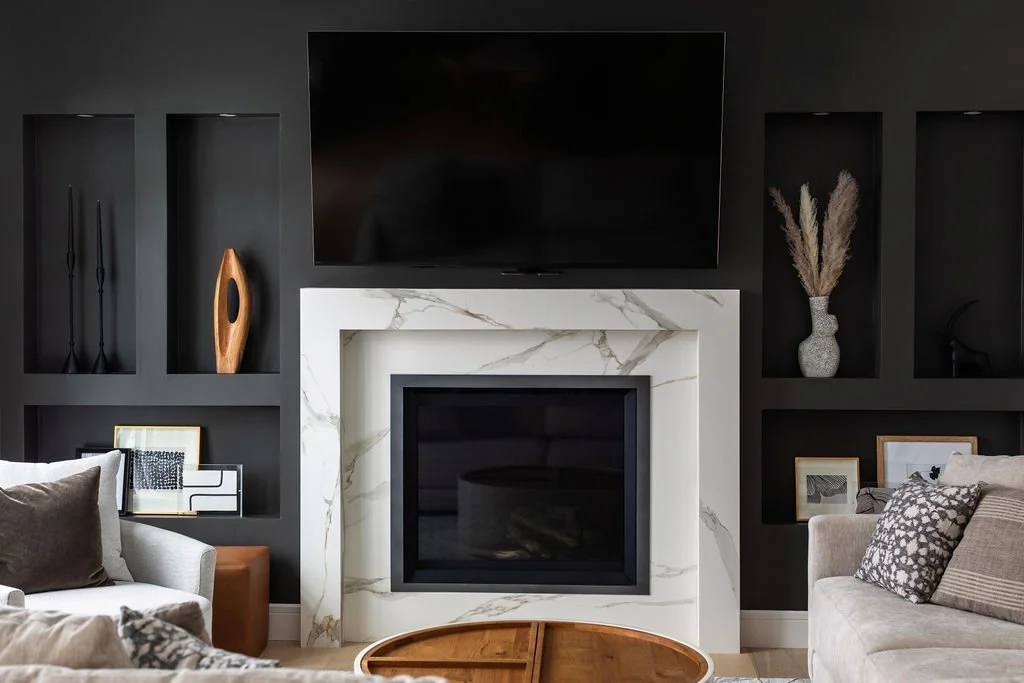The Psychology of Home: Designing Spaces That Nurture Well-being
As an interior design professional, I know that great design is about so much more than aesthetics. It's about creating environments that truly support and enhance our daily lives. Our homes are more than just physical spaces—they're powerful psychological environments that can significantly impact our mental and emotional well-being.
Understanding the Emotional Blueprint of Design
Every design choice we make sends a message. The way we arrange spaces, select colours and incorporate materials isn't just about looking good… it's about creating an environment that responds to human needs and emotions.
The Science of Spatial Comfort
Consider how different design elements interact with our psychological state:
Lighting: Natural light isn't just a design element; it's a critical factor in mood regulation. Carefully planned lighting can boost serotonin levels, improve productivity and create a sense of openness and possibility.
Colour Psychology: Colours are powerful psychological tools. Soft blues and greens create calm and tranquility, while warmer tones like yellows and oranges can inject energy and warmth into a space. It's about creating an emotional landscape within your home.
Spatial Organization: A well-designed space goes beyond visual appeal. Thoughtful organization reduces cognitive load, minimizes stress and creates a sense of control and clarity in our often-chaotic lives.
Designing for Human Experience
Creating Emotional Resonance
The most successful designs tell a story; your story. Personal artifacts, meaningful artwork and carefully curated pieces transform a house into a home. It's about creating spaces that reflect individual experiences, memories and aspirations.
I recently came across this quote in one of Anne Lamott’s Bird by Bird which I think really speaks to this. “Just as everyone is a walking advertisement for who he or she is, so every room is a little showcase of its occupants' values and personalities. Every room is a memory. Every room gives us layers of information about our past and present and who we are, our shrines and quirks and hopes and sorrows, our attempts to prove that we exist and are more or less okay.”
Functional Harmony
Excellent design anticipates and supports how people actually live. An intuitive layout removes friction from daily routines, making spaces feel effortless and supportive. Whether it's a kitchen that makes cooking a joy or a bedroom that promotes restful sleep, functionality is key.
And just think about that one area in your home that becomes a bottleneck or is forever a drop zone. Now imagine if that space was optimized to meet your actual needs. Most likely, it would have a postive impact on your day to day life if it functioned for you.
Inclusive Design: Beyond Aesthetics
Supporting Diverse Neurological Experiences
We must recognize that everyone experiences spaces differently. Especially for neurodivergent individuals, where design becomes a critical tool for comfort and functionality:
Sensory-sensitive lighting solutions (I love smart lighting for supporting this)
Acoustic management to reduce overwhelming stimuli (such as felt panels on walls or extra insulation in the walls)
Flexible spaces that can be adapted to individual needs (modular or multi-purpose furniture)
Clear, intuitive layouts that reduce anxiety and support independence
The Holistic Approach to Interior Design
At its core, great design is about understanding human experience. We're not just arranging furniture or selecting paint colours, we're crafting environments that have the power to support mental health, enhance productivity and create a sense of belonging.
A truly well-designed space does more than look beautiful. It feels beautiful. It responds to your needs, supports your lifestyle and creates a sanctuary that helps you be the best version of yourself.
Whether you're redesigning a single room or reimagining your entire home, remember that every design choice is an opportunity to create an environment that nurtures, supports and inspires.



